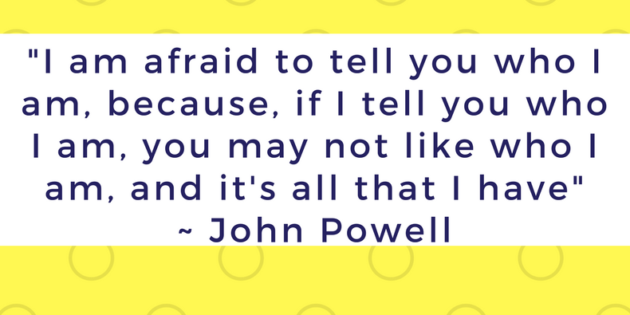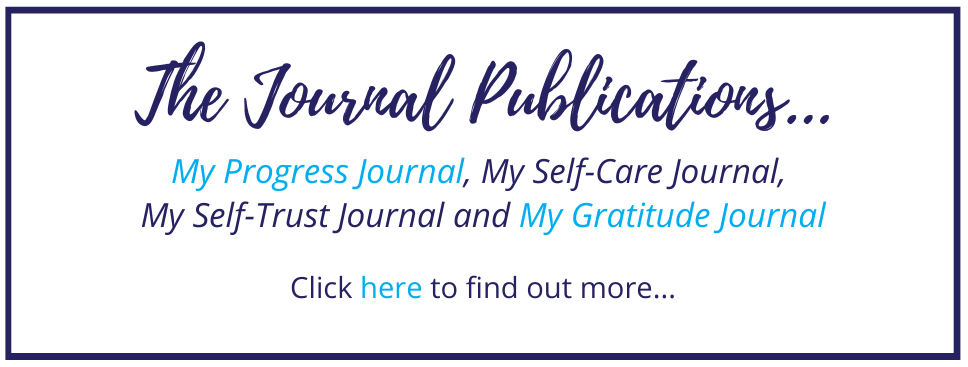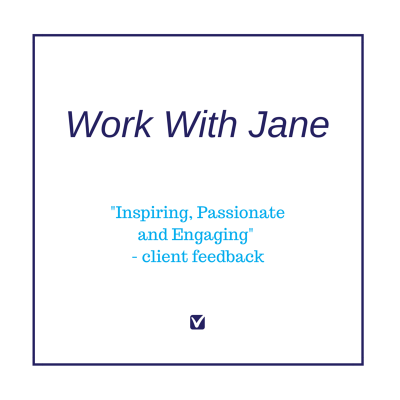A few months ago, I came across the book Why Am I Afraid To Tell You Who I Am? by John Powell. At the time I was researching some information on communication for a presentation I was preparing for. The book aligned with a number of understandings I had learnt previously about relationships and wanted to share some of them with you in this post.
As human beings, we are either closed or open to the experiences of life. When we are closed we try to protect ourselves and our true self by wearing masks, playing games or roles and deny what is truly going on. When we are open, we are willing to learn, open ourselves up and truly experience what is happening by being vulnerable.
So why do we choose one to be open or closed? Maybe it has something to do with the following quote…
“I am afraid to tell you who I am, because, if I tell you who I am, you may not like who I am, and it’s all that I have” (p.4).
3 Key Insights from Why Am I Afraid to Tell You Who I Am?
Before sharing these insights, I think it is worth remembering that each of us have needs and can often get triggered by our vulnerabilities when these needs are not being met or acknowledged.
“There is no fixed, true and real person inside of you and me, precisely because being a person necessarily implies becoming a person, being in process. If I am anything as a person, it is what I think, judge, feel, value, honour, esteem, love, hate, fear, desire, hope for, believe in and am committed to.
These are the things that define my person, and they are constantly in process, in the process of change. Unless my mind and heart are hopelessly barricaded, all these things that define me as a person are forever changing” (p.2 and 3).
The 3 key insights I wanted to share with you from the book are as follows –
1. The Five Levels of Communication
In the book, Powell discusses five levels of communication. You can either use these levels of communication to be your true self or “hide out”. The five levels are –
Level Five: Cliche Conversation –
At this level of communication, shallow conversations takes place and questions often include –
“How are you?, What have you been up too? or What’s happening with the weather?”
There is very little sharing about the person at all and everyone remains safe in the conversation. When conversation remains on this level people can become lonely, bored and disconnected with the person.
Level Four: Reports Facts About the Other
On the fourth level, there is little real communication. People talk about other people and expose almost nothing about themselves. As Powell writes –
“We give nothing of ourselves and invite nothing from others in return.”
Level Three: My Ideas and Judgements
On this level there starts to be some communication. Individuals start to communicate their ideas, opinions and decisions, however communication remains guarded.
Level Two: My Feelings (emotions) ‘Gut Level’
Communication on this level describes what is going on inside of you – how you feel about a situation, experience or person. Feelings are owned by the individual and sharing them to another person can be quite challenging. Powell says –
“Most of us feel that others will not tolerate such emotional honesty in communication. We would rather defend our dishonesty on the grounds that it might hurt others, and, having rationalised our phoniness into nobility, we settle for superficial relationships.” (p.35).
Level One: Peak Communication
Deep and authentic relationships occur at this level. Peak communication experiences occur when you are emotionally open and honest with the other person. According to Powell –
“In our human condition, this can never be a permanent experience. These should and will be, however, moments when encounter attains perfect communication. At these times the two person will feel an almost perfect and mutual empathy.” (p.36).
2. Dealing with Emotions When Communicating With Other People
When we are communicating at level one, it is important to remember to be mindful of our emotions and not be taken over by them. Emotions share information about individual needs and relationships with others. –
“Whatever my secrets are, remember when I entrust them to you, they are part of me” (p. 51).
According to Powell, a healthy way to deal with emotions is –
- Become aware of your emotions – e.g. what are you feeling?
- Admit your emotion – e.g. how strong is the emotion?
- Investigate your emotion – e.g. where did the emotion come from?
- Report your emotion – e.g. what are the facts about your emotion?
- Integrate your emotion – e.g. with conscious awareness, what is the next step?
“To tell you my THOUGHTS is to locate myself in a category. To tell you my FEELINGS is to tell you about me.” (p. 55).
3. The Roles or Games We Play
On my adventure of getting to know myself, there have had many situations where I felt very uncomfortable speaking up and/or being who I truly am in some of my relationships. Over the years, I realised I was taken on different roles and saw this was impacting my life (including my relationships).
Yes there have been legitimate reasons from the past for taking on these roles, however in the end, I needed to unravel and get to the bottom of the reasons and take action, so I could just be myself. I like the following quote from the book that says –
“These games have one thing in common, no matter how different they may seem; they mask and distort the truth about the one most important thing that I could share with you: myself. I must ask myself: Which of these games do I play? What am I seeking? What am I hiding? What am I trying to win?”
In the back of the book Why Am I Afraid To Tell You Who I Am?, Powell shares 37 games and roles people play. The games and roles people play depend on the program people are running within themselves. A couple of the ones I could relate to were –
- All Heart – I have had to learn to come in to alignment with my head and heart and not let my heart take over.
- The Competitor – growing up as an athlete, I was very entangled in this role and now have learnt to embrace the other side of “winning” and let go of the outcome.
- The Conformist – or maybe people pleaser is another way of looking at this?
- The Dreamer – I have been very good at escaping from reality or bolting, however I can see now the many challenging situations brought me back to reality and in to the here and now.
- Indecisive and Uncertain – over the years I now realise, I have learnt more from my perceived failures than my wins.
- The Procrastinator – need I say more?
What are the ones you can relate to? Remember – there are another 32 in the book with lots of explanations!
Personally, I am grateful I took the time to see my own patterns or roles and will continue to learn to make conscious choices when situations arise and not pretend they are not happening.
I hope this post has given you some insights in to why people are afraid to tell you who they are! If you have any questions please let me know of pop over to our facebook page here.
If you are ready to reclaim your courage and take the next step towards freedom and opening your heart, why not join our Toolkit?
Reference –
Powell, J. (1999). Why Am I Afraid To Tell You Who I Am?. London, Great Britain: Zondervan.

















2 Comments
[…] reminded of that little book by John Powell entitled “Why Am I Afraid To Tell You Who I Am?” The author quoted a person who answered the question of the […]
[…] pastors quoted the levels of communication discussed in John Powell’s book, Why Am I Afraid to Tell You Who I Am? which talks about how relationships move from one Level 5- Cliche Conversations, which is when […]
Leave A Response